There is a lot that can go wrong entering a cleanroom environment. Your cleanroom personnel’s behaving accordingly to the established standards is absolutely necessary in order to sustain the classification of your cleanroom.
It is a widely known fact that people and the machinery used in the cleanroom are the biggest source of contamination.
There are certain things that can affect the contamination factor in your cleanroom, especially if it is related to personnel, use of cleanroom suits, and other seemingly little details resulting in possibly big contamination breaches.
Prior to entering the cleanroom environment, a person must have:
- Taken off all jewelry and makeup;
- Leave all unnecessary items in the personal lockers;
- Good personal hygiene;
- Not smoked for at least half an hour before;
- Been trained for cleanroom operations and most importantly, cleanroom entrance procedure.
It is always important to request training before entering a cleanroom for the first time, and in case you have not dealt with this cleanroom class before, training becomes absolutely crucial.
For example, this is a cleanroom entering and exiting procedure from a university:
The photos below are courtesy of Cleanroom Garments.
1. Pre-Gowning Requirements
1.1. Footwear (must cover the foot) must be worn with socks or hosiery, NO Sandals or open-toed shoes;
1.2. Pants or other full leg covering are to be worn (Skirts, shorts or dresses are not allowed);
1.3. Wipe loose dirt and liquid from footwear before entering the gowning area;
1.4. Wash hands before entering the cleanroom gowning area;

1.5. Food (includes chewing gum) and Drinks must NOT be taken into the cleanroom;
1.6. No makeup is allowed in the cleanroom;
1.7. Avoid wearing contact lenses, as these can absorb vapours and trap chemicals (toxic) in the space between the lens and the eye. In the event of an emergency, it may be difficult to remove the lenses or flush the eye with water;
1.8. Bunny suites, booties, face mask and gloves must be worn at ALL times in the cleanroom;
1.9. Move slowly, carefully and purposefully in the cleanroom;
1.10. Avoid if you can the need to sneeze or cough whilst in the cleanroom;
1.11. Avoid touching your face (oils) and then other surfaces, equipment, utensils. If you do touch your face or touch other possible contaminants, please change your gloves.
2. Gowning
2.1. Obtain a bunny suit (in a ‘coat’ bag) and safety glasses from the cleanroom Technician: this will be dedicated to your usage. Store your clean room suits in the suit bag and hang it on the garment rail. Make sure that your ‘First and Surname’ is on the bag;
2.2. Sign-In: Remember to log-in to the cleanroom by signing the book on the changing bench; this is a safety requirement and is important in the event of an accident;
2.3. Put on the bunny suit;
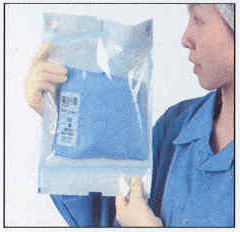
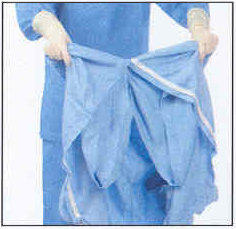
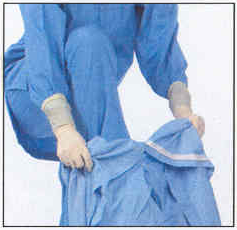
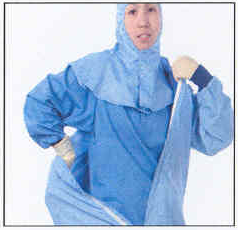

2.3.1. Raise your hood ensuring that all of your hair is covered (inside the hood, bunny suit);
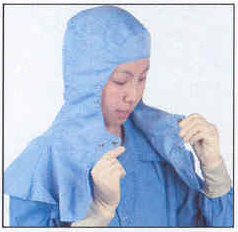
2.3.2. Put the shoe cover over your shoe (on one leg) and fasten the snap;
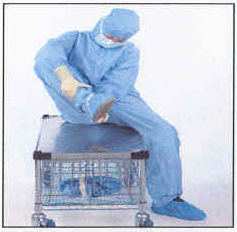
2.3.3. Move this leg over the bench to the ‘clean side’;
2.3.4. Put the shoe cover over the shoe of the other leg, fasten the snap and move over to the ‘clean side’;

2.3.5. Put on safety glasses, plastic (Vinyl) gloves and the paper ‘snood’ over your mouth (covering your nose);
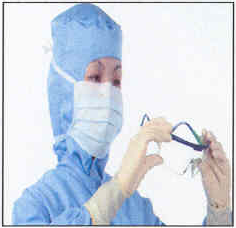
2.3.6 Check yourself in the mirror and look to see that everything is tucked in fastened and zipped;
2.4. You are now ready to enter the cleanroom.

3. Leaving the Cleanroom and Laundry
3.1. Place your cleanroom suit in your coat bag for use the next time you come back to the cleanroom;
3.2. Place your used gloves and mouth snood in the waste bins provided;
3.3. If your cleanroom suit is dirty, place it inside the ‘Guardline’ box situated in the cleanroom office for laundry (used garments will be sent for cleaning when there are a sufficient number of items to justify the service).
To sum up, it is important to establish a lifestyle for the cleanroom employees that decreases the possibility of contamination, and decreases overall particle count in the cleanroom environment.
Remember: Cleanrooms need to be kept clean!